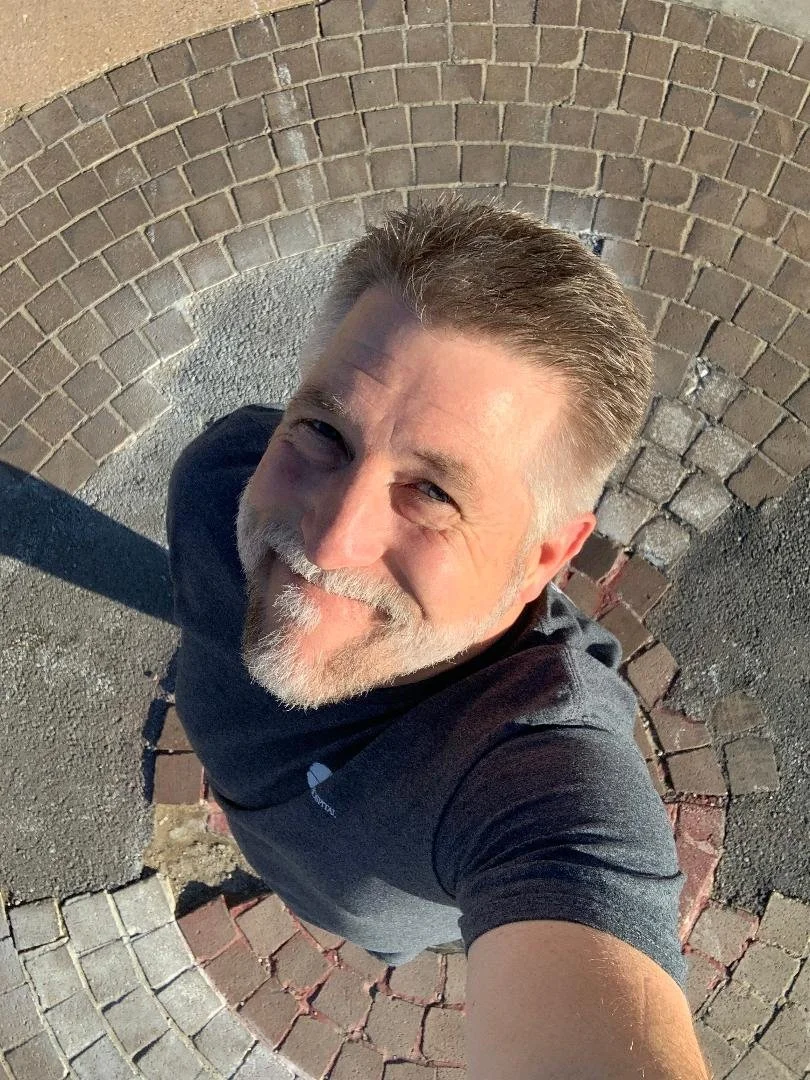Interview
Kelly Duke
Kelly Duke is a self-taught oil painter, novelist, and storyteller with deep roots in the American Southwest and currently resides in Oklahoma. His work explores emotional depth through color, memory, and landscape - often drawing from personal history, family legacy, his deep faith and quiet moments of tension. After decades in executive leadership, Kelly turned fully to painting as a way of reclaiming stillness and expressing the internal. His art invites the viewer to slow down, feel deeply, and honor the spaces between.
What is your background and how did you start your journey in the art world?
“My background has always blended two worlds - leadership and storytelling - but it wasn’t until later in life that I embraced visual art as a primary form of expression. I spent almost twenty years in the ad agency business as an owner/operator. In the beginning, I was the CEO, Creative Director, Account Supervisor, Janitor and everything in between. One of my clients recruited me into the healthcare business. I’ve worked for decades as a healthcare executive, navigating complex systems and emotional human experiences. Painting became a powerful outlet - a way to make sense of that journey. I started with a pencil sketch of Marilyn Monroe in a shared office in Santa Teresa, New Mexico. A friend and Hall of Fame Master artist, Ann James Massey, walked by, stopped, and said, “You need to frame that.” That single moment gave me permission to believe I was an artist.”
What inspires you?
“I’m inspired by contradiction - beauty born from brokenness, stillness emerging from chaos. Much of my work is shaped by emotion: grief, longing, peace, resolve. I’m especially drawn to stories that aren’t told out loud. Painting gives me a language for those internal moments we all carry but struggle to express. My Granny was a fisherman, and some of my most resonant pieces are anchored in that memory - quiet, distant waterlines and ‘No Fishing’ signs where healing hides behind restriction.”
What themes do you pursue? Is there an underlying message in your work?
“The themes in my work are deeply personal, but also universal: healing, memory, introspection, boundaries. The underlying message is often about finding peace - not in perfection, but in acceptance. I explore the tension between presence and absence, between holding on and letting go. Some paintings invite the viewer to step closer and ask: ‘What’s not being said here?’ Others simply offer stillness, a visual breath.”
How would you describe your work?
“I would describe my work as emotional realism mixed with quiet abstraction. It’s painterly, layered, sometimes intentionally imperfect. I lean toward bold color palettes with muted undercurrents, and I’m constantly pushing contrast to evoke depth - both visually and psychologically. I want my paintings to feel like a conversation you didn’t expect to have but needed anyway.
Which artists influence you most?
“I’ve always been mesmerized by the old masters. I can stand in front of a Monet, a Picasso, or a piece from the Dutch or Impressionist schools for hours - completely taken in by the whole image. From a distance, the work feels perfect, alive, almost photographic in its emotional resonance. But when I move in close, I see the chaos - the imperfect brushstrokes, the layered color, the humanity of the hand. That tension between control and imperfection fascinates me. I wouldn’t say I follow many contemporary artists closely, but the old guard continues to teach me about restraint, audacity, and the impact of subtlety.”
“I would describe my work as emotional realism mixed with quiet abstraction. It’s painterly, layered, sometimes intentionally imperfect.”
What is your creative process like?
“I don’t just think about the final painting - I think about the full experience for the person who will live with it. From concept to execution, I imagine what it feels like to own the story, not just the image. I even save the palette I used to create each piece - raw, messy, still holding the paint. That way, the collector isn’t just getting a finished product. They’re getting the evidence of the process. It’s tactile, personal. I want people to feel like they’re stepping into something intimate - like they’re holding onto the memory, not just the outcome. My process is instinctual. It usually begins with a single feeling, a word, or a color - and then it becomes a conversation between intention and accident.”
What is an artist’s role in society and how do you see that evolving?
“Artists hold space for reflection. In a world constantly rushing forward, we remind people to pause, to feel. I think the artist’s role is also to preserve ambiguity - especially when society leans hard into binary thinking. As the world becomes more digitized, I believe physical, tactile art will only grow in importance. People crave texture, nuance, and meaning you can’t scroll past.”
Have you had any noteworthy exhibitions you'd like to share?
“I’ve exhibited locally and regionally, but one of the most rewarding experiences has been sharing my work through my website, NoFishing.shop. It’s allowed me to connect directly with collectors and art lovers who find emotional resonance in the stories I’m telling. I’m currently working toward a large piece that is set in the Grand Ole Opry that blends visual art with prose excerpts from a moment with Vince Gil singing a good-bye song in remembrance of the loss of an long-time Opry backup singer - bringing together two creative voices on canvas.”
Website: NoFishing.Shop
Instagram: @nofishing.shop






